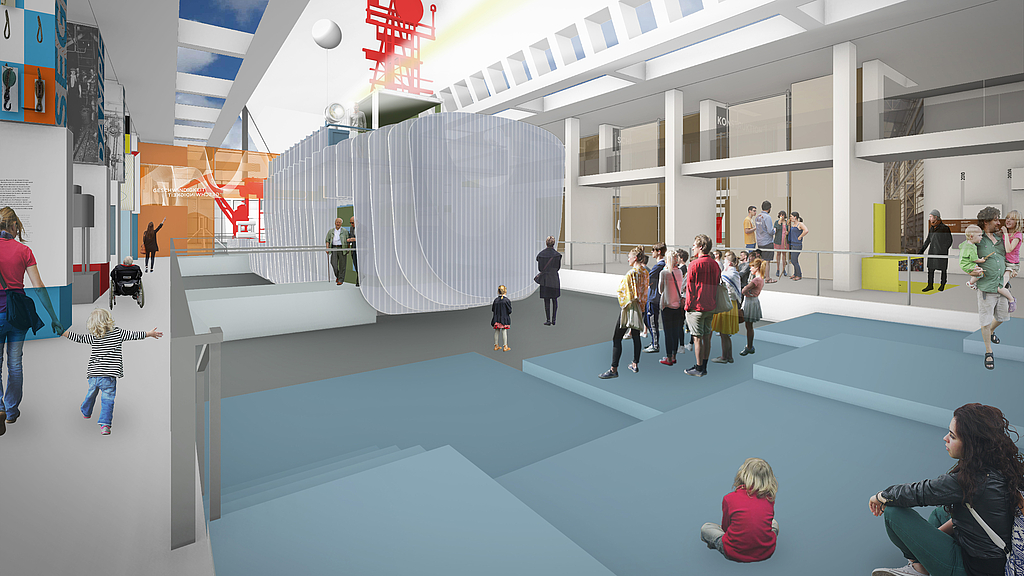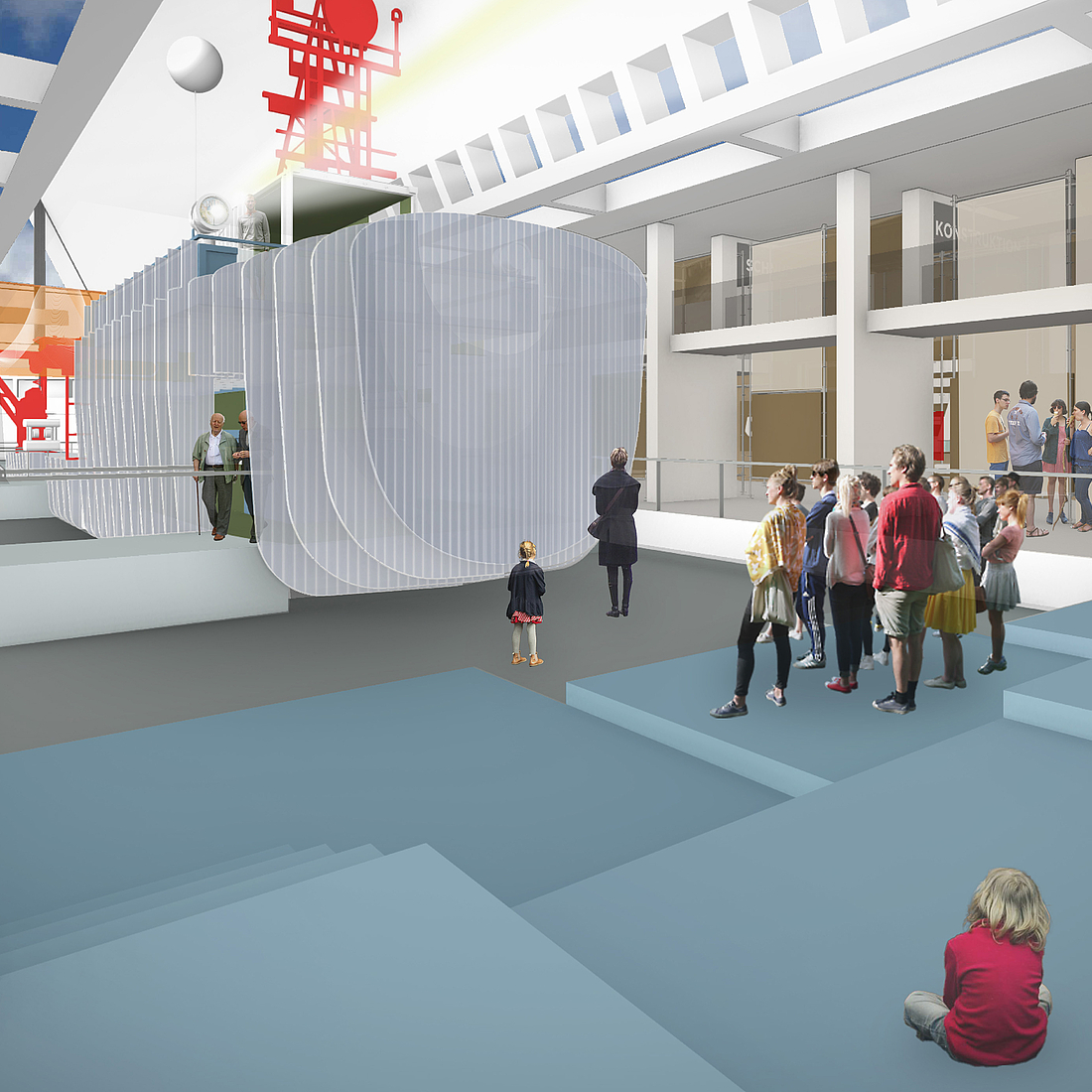Ship Realms – The Ocean and Us
How does a ship float? How is it constructed? What does a ship consist of? What does a ship do to the sea? The new permanent exhibition "Worlds of Ships - The Ocean and Us" in the extension building will provide answers from July 18. 2024. It invites visitors to discover ships and their stories, learn about the forces of the sea and see how we interact with them.
Ships awaken longing and generate knowledge. They harness the forces of nature and change the world. No ship without teamwork: this applies to shipbuilding as well as to the crew on board. Ships demonstrate inventiveness and the joy of discovery. But they are also a means of and witness to the merciless exploitation of the earth - with irreversible consequences. Always bigger, faster, further: ships are also part of the economic system. The more people know about the connection between ships, shipping and the oceans, the better they can assess how they influence the future with them.
The new exhibition begins with the question of how a ship is built: since industrialization in the 19th century, building ships has meant positioning oneself in an increasingly global economic system. The planning of a ship has always been a major project. The construction of a ship, its operation and its scrapping are dependent on global financial and economic conditions. The extent to which this has had and continues to have an impact on the reality of life at shipyards is shown, among other things, by the role of migrants in shipbuilding. However, the work at the shipyards also shows how much the construction of a ship still differs from other branches of industry today. Building a ship is and remains a unique undertaking.
Research vessels are among the most fascinating special ships in existence. That is why there is a large installation depicting a research vessel at the center of the new exhibition. The DSM wants to show how research is carried out on and with such a ship. Numerous hands-on stations invite museum visitors to explore the ship. They illustrate how the journey of knowledge from sea to land takes place, what an adventurous expedition has to do with "big data" and why important findings sometimes require office routine first.
Research vessels often function in the same way as other ships. The exhibition therefore takes a look at the numerous components of a ship, without which neither research nor the use of the seas would be possible.
A ship is a highly complex puzzle. This is illustrated by the "Ship and equipment" section. The individual components have shaped cultural perceptions for centuries: What would everyday language be without the anchor? However, ship components and their materials also always represent human intervention in the marine environment. This is why alternative forms of propulsion are shown: from rediscovered sail propulsion to the imitation of sharkskin as a means of combating marine growth - innovations in shipbuilding help to reduce the impact of human intervention in the sea and thus secure the future. They are the link between scientific research into the sea on the one hand and its economic use on the other.
Knowing why a ship floats, how submarines manage to stay under water and why tides exist is part of our everyday lives. The Ship and Environment section uses experiments, but also looks at the objects, to show how much dealing with the laws of the sea has contributed to the relationship between man and the sea. This is particularly impressive in the history of analog computers, the two stationary tide computers that will be part of this section of the exhibition.
Since the beginning of human history, people have taken food from the sea - but not only that: the sea has always been associated with hopes for new forms of healing and alternative ways of life, for networking and a better future. Newly flared up debates about the usability of mineral resources such as manganese nodules show how political and economic interests take precedence over the protection of the oceans.
They also show how little thought is given to the consequences of these actions. Objects such as the harpoon gun or a motorized fishing boat make us think about our relationship to the oceans.

The abstract research vessel is constructed in the so-called gravel bed and invites exploration.
Graphic: DSM / chezweitz
